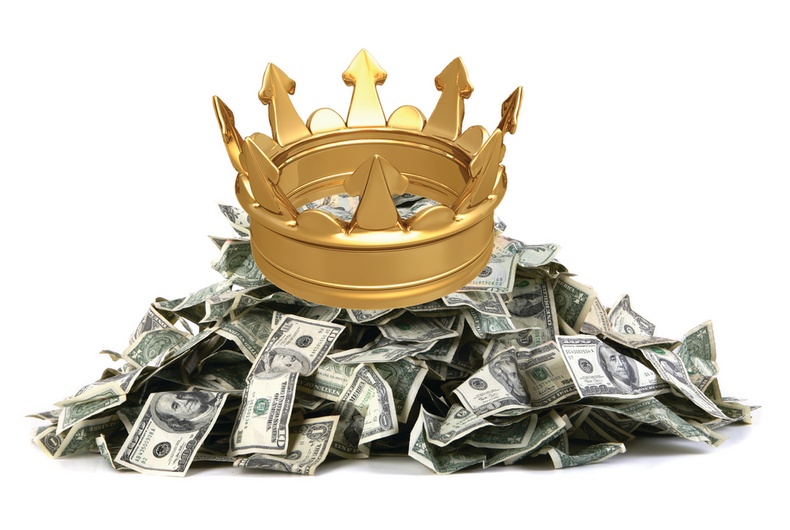BETTER OR NOT? The relative key figure KCV!
Since there were a few questions about the KCV in a recent post, here is a brief explanation 😊
The P/E ratio or KUV is often used as an initial classification of whether a company is favorably valued. The KCV, which can also be used and offers various advantages, but also disadvantages compared to other relative key figures such as the P/E ratio or KUV, is often forgotten.
Like the P/E ratio (price/earnings ratio) or KUV (price/sales ratio), the KCV (price/cash flow ratio) is a relative indicator and expresses the ratio of a share price to the cash flow per share. [1]
In contrast to the P/E ratio, it is not the profit but the cash flow that is the relevant counterpart for determining the KCV.
Cash flow:
"Cash flow, also known as cash flow statement or cash flow, is a key figure that reflects the profitability of a company. It takes into account the cash flows within a company. Put simply, when calculating the cash flow, all incoming and outgoing payments within a certain period are offset against each other. The resulting difference is the cash flow." [2]
We divide the cash flow statement into 3 parts. These can also be easily identified in any annual report in the cash flow statement:
Cash flow from operating activities
-Cash flow from investing activities
=Free cash flow
-Cash flow from financing activities
=Cash flow
Free cash flow results from the operating cash flow minus the cash flow from investing activities and indicates how much money is left over to repay loans, pay dividends or buy back shares. Free cash flow is therefore a figure often used by investors to assess strategic corporate decisions and shareholder value!
-Examples of cash flow from operating activities: cash outflow from rent payments, cash from sales of products/services, payment of taxes, cash outflow from payment of wages and salaries
-Examples of cash flow from investing activities: purchase/sale of machinery, sale of subsidiaries/assets
-Examples of cash flow from financing activities: payment of dividends, repayment/borrowing of loans, share buybacks, cash from capital increases
Calculation and valuation of the KCV:
Calculation:
Cash flow per share / price per share
or
Cash flow / market capitalization*
*Market capitalization = price per share x shares outstanding
Cash flow from operating activities or free cash flow is generally used to calculate the KCV. If you use key figures from different sources, you should therefore always know which cash flow was used.
Valuation:
A KCV < 1 would mean that there is more cash flow available in the company than the company is actually worth or is traded on the stock exchange. This would mean an enormous undervaluation or that we are in a value trap and the company is in considerable difficulties, which is why the market is valuing the company at a junk price.
However, there are generally no clear benchmarks for relative key figures as to when they can be considered cheap or expensive. Comparable companies, previous periods and historical developments must always be taken into account in order to classify them correctly. There are also always differences between sectors.
The rule of thumb is:
KCV < 15-18 favorable
P/B ratio < 1 favorable
P/E ratio < 1 favorable
P/E ratio < 15 favorable
PEG < 1 favorable
Below are two links to companies with an extremely low KCV. It has not yet been conclusively determined whether this makes them cheap. But perhaps they are worth a look (no investment advice).
European companies with high cash flows and therefore low KCVs: https://www.boerse-online.de/nachrichten/aktien/kcv-von-unter-10-24-reiche-und-unterbewertete-europaeische-aktien-20332099.html
20 stocks with high cash flows and therefore low KCVs: https://www.boerse-online.de/nachrichten/aktien/kcv-von-unter-10-diese-20-unterbewerteten-aktien-schwimmen-im-geld-20323270.html
Advantages KCV [1]:
- Less susceptible to accounting policy manipulation. Take a look at my articles on impairment or big bath accounting.
- Better comparability with other companies compared to the P/E ratio (due to different accounting standards).
- The P/E ratio is not applicable to companies with losses. The KCV, on the other hand, can be used here.
Disadvantages of the KCV [1]:
-Cash flows can fluctuate more strongly. For example, the sale of a large plant or subsidiary is reflected directly in the cash flow, but is of a one-off nature. However, such an event does not have the same effect on profit. Several comparison periods should therefore be used.
-Although cash flow itself cannot be influenced (in comparison to profit), management can withhold payments in order to present cash flow more positively in a certain period. These measures are hardly visible to investors. Therefore, several comparison periods should always be used.
In general, it should be noted that relative key figures only represent a "relative" value and can only make a statement as to whether a key figure appears favorable compared to previous periods or peer companies.
Conclusion:
The KCV is a relative indicator that is often forgotten. However, it should be noted that several comparison periods are used to identify and interpret fluctuations in cash flow. Nevertheless, it does offer some advantages. However, relative key figures should never be used in isolation. The combination of relative ratios and intrinsic valuation should be the key to success. However, to get a comprehensive picture of a company, I recommend integrating the KCV into your valuation.
Perhaps this article has helped you a little @Boarkeinname
For further and more in-depth knowledge on company valuation, I recommend the following article:
https://app.getquin.com/activity/laOUVhfFDI?lang=de&utm_source=sharing
Sources:
[1] https://www.finanzen.net/lexikon/chartanalyse/kcv
[2] https://www.weltsparen.de/glossar/cashflow/
Pictures:
https://www.cpapracticeadvisor.com/2014/09/05/rule-1-cash-is-king/5713/










